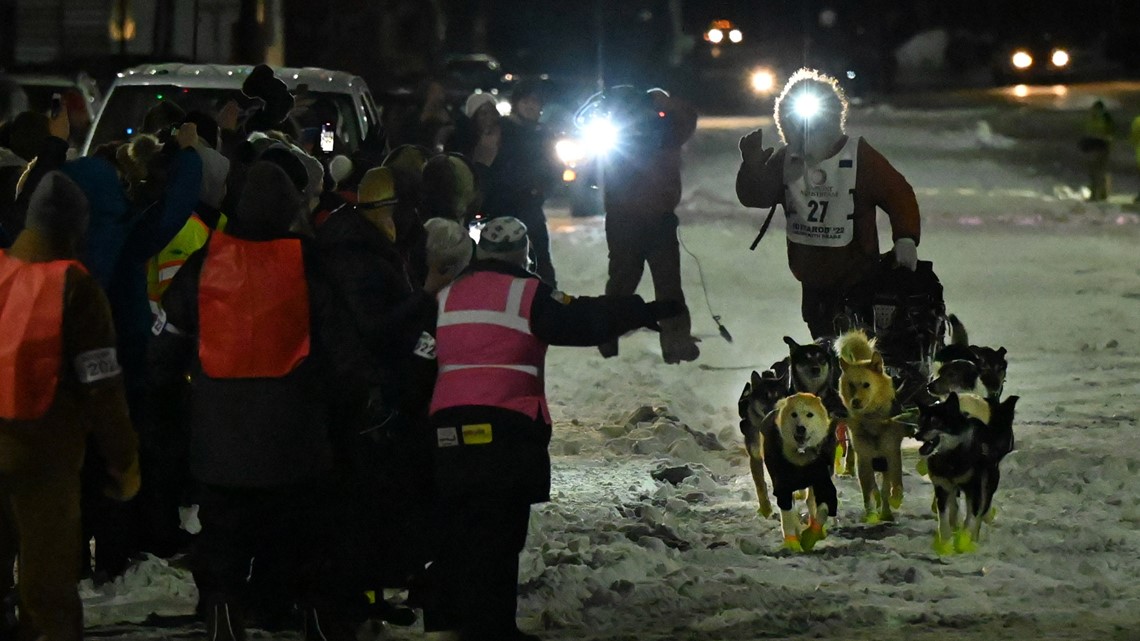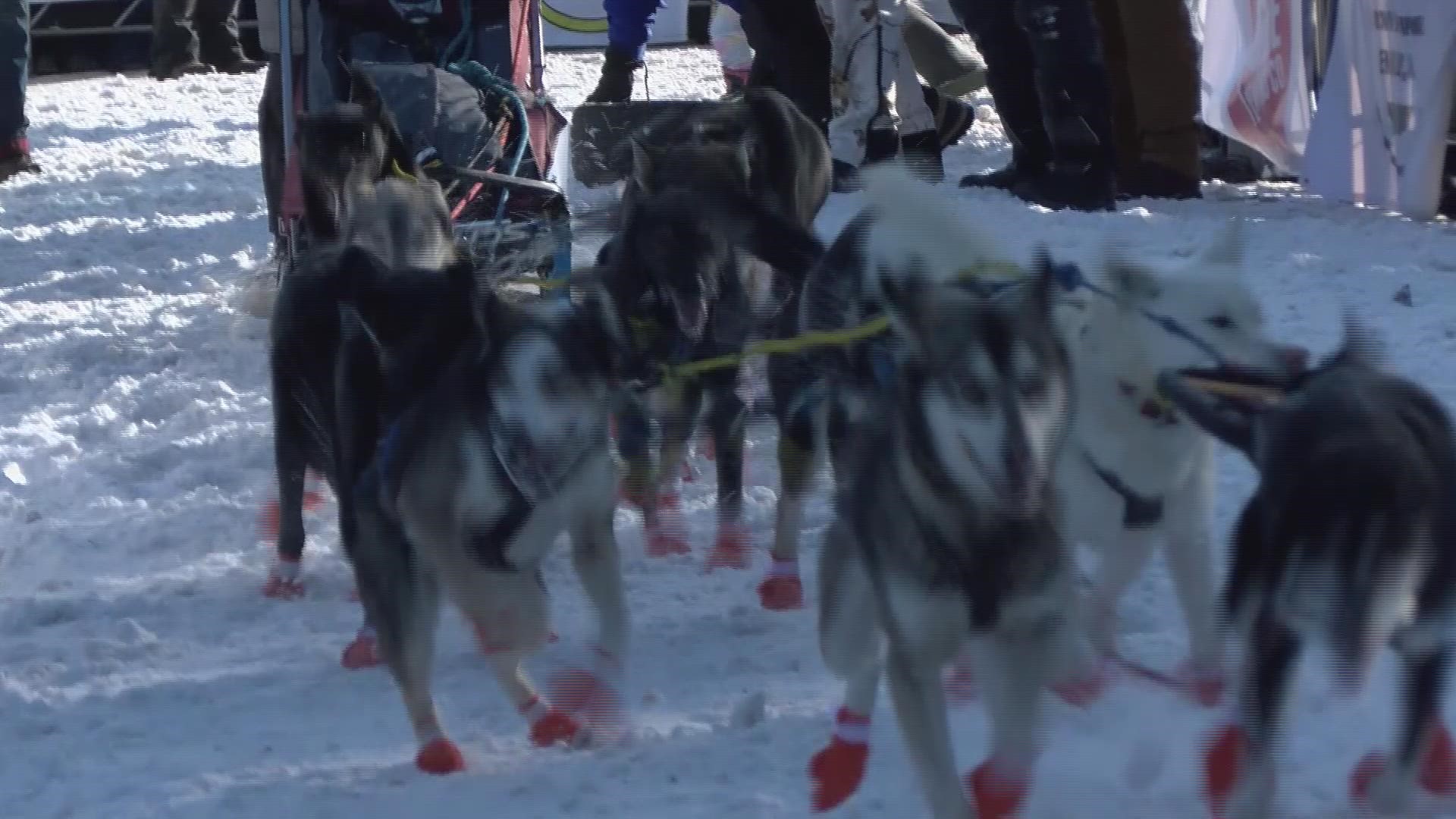NOME, Alaska — Musher and Minnesota native Brent Sass has claimed his first Iditarod Trail Sled Dog Race, crossing the finish line in Nome, Alaska early Tuesday.
The 42-year-old wilderness guide and kennel owner came off the Bering Sea ice and drove his team of 11 dogs down Front Street in Nome shortly before 6 a.m. local time. Fans lined the street welcoming the popular musher, some giving him high-fives as a police cruiser escorted Sass the final few blocks to the burled arch that marked his victory.
“It's awesome, it's a dream come true,” Sass said with his beard and mustache partially encrusted in ice during the post-race interview before he was presented a prize-winning check of $50,000.
“When I started mushing, my goal was to win the Yukon Quest and win the Iditarod. Checked them both off the list now," he said.
Sass said he was “super, super, super proud” of his dog team. “It's all on them. They did an excellent job the whole race. I asked a lot of them, and they preformed perfectly,” he said.
”Every one of these dogs I've raised since puppies, and we've been working towards this goal the whole time, and we're here," he said, his voice cracking. “It's crazy.”
It’s the first Iditarod win ever for Sass, who was running in his seventh Iditarod. His previous best finish was third last year.
The 42-year-old native of Excelsior, Minnesota left the previous checkpoint in White Mountain Monday evening with a 2 ½ hour lead over defending champion Dallas Seavey. All mushers must take a mandatory eight-hour break in White Mountain before making the final push for the finish in Nome. Safety is the last checkpoint before the finish line.
“We stuck to our game plan and ran our own race, and we weren’t worried about anybody else around us,” Sass told Anchorage television station KTUU during his layover.


For his part, Seavey was resigned to runner-up status. He flatly told KTUU that he couldn’t win unless something goes wrong for Sass.
“I haven’t looked at the time, but isn’t he like three hours ahead?” Seavey said.
Seavey was attempting to become the race’s most decorated musher. He and Rick Swenson are tied with the most Iditarod victories at five.
He was still able to joke, saying: “We’ve got a pretty solid lead over third.”
The third place musher, Jessie Holmes, was about 50 miles (80 kilometers) behind Seavey.
The nearly 1,000-mile (1,609-kilometer) race across Alaska began Mar. 6 just north of Anchorage. The route took mushers along Alaska’s untamed and unforgiving wilderness, including two mountain ranges, the frozen Yukon River and Bering Sea ice along the state’s western coastline.
This is the 50th running of the race, which started in 1973. This year's event began with 49 mushers, and five have dropped out along the trail.
Sass, a wilderness guide when he's not racing, was the Iditarod’s rookie of the year in 2012 when he finished 13th. The next year he fell back to 22nd place, before skipping the 2014 race.
In 2015 he was disqualified when race officials found he had an iPod Touch with him on the trail, a violation of race rules banning two-way communication devices because the iPod Touch could connect to the Internet. He said he was clueless, and wanted fans to know he had no intention of cheating.
Sass placed 16th the following year before taking a three-year break from the Iditarod. In 2020, he placed fourth and was third last year.
Sass, who lives in the tiny area of Eureka, about a four-hour drive northwest of Fairbanks, had more success meanwhile in the Yukon Quest International Sled Dog Race.
He claimed titles in that 1,000-mile (1,609-kilometer) race between Fairbanks and Whitehorse, Yukon, in 2015, 2019 and 2020. This year, the race was shortened to smaller races on both sides of the border, with Sass winning both the 350-mile (563-kilometer) Alaska race and the 300-mile (483-kilometer) Canadian contest.
Watch KARE in the Air:
Check out amazing drone video of Minnesota's most beautiful and iconic spots in our YouTube playlist:

